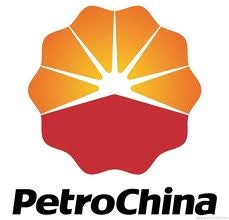According to the latest issue of the IMF’s “World Economic Outlook,” economic growth in the BRIC nations will account for the lion’s share of the global output growth. Some earlier estimates say that the BRIC nations will account for 37% of global growth in the period 2011-2016. While developed economies are expected to accelerate growth to a still-meager 1.5% in 2013 from 1.3% last year, BRIC members China, Brazil, and India are each expected to see robust expansion above the world’s average of 3.6%. For example, in 2013 relative to 2012, the Chinese growth will accelerate to 8.2% from 7.8%, India’s output will increase to 6.0% from 4.9%, and Brazil’s growth will jump to 4.0% from 1.5%. Russia will see a marginal increase in output growth to 3.8% from 3.7%. This trend is likely to be supportive of the performance of the BRIC equities. Barron’s recently posted a bullish call on Brazil and India markets.
While it is best to seek exposure to the BRIC growth through stocks of established companies from developed nations, a direct exposure to the expanding market can be attained through several ADRs listed on the U.S. exchanges. Here is a list of five possible options for a diversified BRIC portfolio of dividend stocks that can provide some safety margin against possible volatility and downside risk. Still, investors should be aware of the exceptionally high risk associated with investing in emerging market stocks, including withholding taxes as well as currency and political risks.

Sterlite Industries India Limited (NYSE:SLT) is an Indian non-ferrous metals mining company, engaged in copper production. Its dividend yields 1.8% on a payout ratio of only 17%. Stronger BRIC growth, and especially the rebounding demand in China, will fuel copper consumption, which is expected to rise 4% annually for the next couple of years. This growth will likely support copper pricing and may be a positive catalyst for Sterlite Industries in 2013-2014. According to Business Standard, in the company’s latest quarter, “strong production and sales volumes of silver, lead and copper and commercial power sales from Sterlite Energy Ltd. helped the company post higher revenues.” Still, analysts forecast contracting EPS growth for the company, on average, for the next five years. SLT’s forward P/E is only 6.7x, well below historical metrics, while its PEG is 0.6. This stock may be considered good value, as it is trading at a price-to-book of 0.92 and a price-to-sales of 0.95. However, the company is exposed to significant foreign exchange risks, which often add to or subtract from its growth. Last quarter, Jim Simons’ RenTech boosted its small stake in the company, while Mount Kellett Capital reduced its position by 26%.
China Mobile Ltd. (NYSE:CHL), China’s largest mobile phone operator, may be considered a play on the Chinese consumer. With 707 million subscribers, it dwarfs the U.S. giant Verizon’s subscriber count by a vast margin. Assuming the large scale of this market, one can grasp CHL’s potential. Its data services are growing robustly and are expected to expand smartly in the coming years. However, the company’s risk includes increased competition from rivals China Unicom (Hong Kong) Limited (NYSE:CHU) and China Telecom Corporation Limited (NYSE:CHA). China Mobile has strong balance sheet with low debt and robust free cash flow generation. One of its additional benefits, according to S&P, is the likelihood that the Chinese government will help the company in case of any major financial distress. CHL pays a dividend yield of 3.2% on a payout ratio of 38%. Over the past five years, its dividend growth averaged nearly 16% annually. CHL has a high free cash flow yield of 15.6% and attractive P/E of 11.7x trailing and 11.3x forward earnings. It may be considered a value stock. Still, analysts see its long-term EPS growth contracting by 3.2% annually for the next five years. Last quarter, fund manager Ken Fisher bought more than 3.9 million shares of CHL.
Mobile TeleSystems OJSC (NYSE:MBT) is Russia’s mobile phone operator. Similarly to CHL, MBT represents a play on the Russian consumer’s rising incomes and intensified use of data services. The company pays a dividend yield of 4.0% on a payout ratio of 88% of trailing earnings and 58% of free cash flow. The company has a stable market share, but may be facing intensifying competition. Its positive aspect is consistently positive free cash flow generation. However, the risks include its operating in a mature market, high debt-to-equity ratio of 213%, and large price-to-book of 6.2 (almost 4 times its industry’s ratio). The positives include its long-term annualized EPS growth forecasted to average 14.5% for the next five years and a forward P/E of 10.6x. In 2013, its EPS may dip slightly by 1.6%. Arrowstreet Capital hiked its stake in the company by 130% in the previous quarter.
Companhia de Bebidas das Americas (NYSE:ABV) is the beverages giant of Latin America. This is a play on the region’s consumer sector. The Latin American arm of Anheuser-Busch InBev NV (NYSE:BUD) pays a dividend yield of 2.1% on a payout ratio of 59%. The company’s dividend growth averaged 28.8% annually over the past five years. AMBEV’s EPS is expected to increase 8.9% next year to $1.84. The company’s annualized long-term EPS CAGR is forecasted at 9.6%. AMBEV’s future growth will be driven by the expanding middle class (rising per capita incomes) in Brazil and other Latin American countries. That rising incomes mean higher beverage sales can be illustrated by the fact that, according to Euromonitor, “people in Latin America spend a greater proportion of their disposable income on soft drinks than any other region.” In 2011, on average, that proportion was 4%. This may be good, but the price of owning AMBEV is high. It is trading at 23.0x its forward earnings. Its positive attribute is low long-term debt-to-equity ratio of 8%. Last quarter, billionaire Ken Fisher reported owning more than 9 million shares of ABV.
Disclosure: I have no positions in any of the stocks mentioned above.





